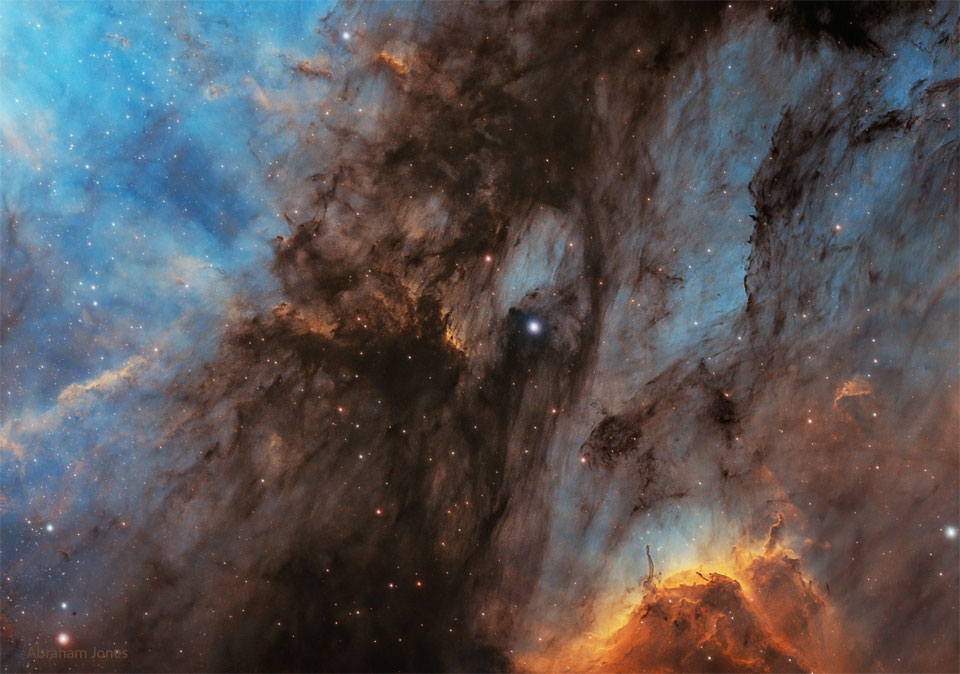2023年8月7日
The Pelican Nebula in Gas, Dust, and Stars
Credit & Copyright: Abe Jones
Explanation: The Pelican Nebula is slowly being transformed. IC 5070 (the official designation) is divided from the larger North America Nebula by a molecular cloud filled with dark dust. The Pelican, however, receives much study because it is a particularly active mix of star formation and evolving gas clouds. The featured picture was produced in three specific colors — light emitted by sulfur, hydrogen, and oxygen — that can help us to better understand these interactions. The light from young energetic stars is slowly transforming the cold gas to hot gas, with the advancing boundary between the two, known as an ionization front, visible in bright orange on the right. Particularly dense tentacles of cold gas remain. Millions of years from now, the Pelican nebula, bounded by dark nebula LDN 935, might no longer be known as the Pelican, as the balance and placement of stars and gas will surely leave something that appears completely different.
Tomorrow’s picture: Jupiter and the Moons
鹈鹕星云的云气、尘埃与恒星
影像提供与版权: Abe Jones
说明: 鹈鹕星云正慢慢变形之中。此星云正式的编录号为IC 5070,它和较大的北美洲星云,以一个满是黝黑尘埃的分子云相隔。因为鹈鹕星云是个特别活耀的恒星形成区和演化中气体云之混合体,故常成为天文研究的焦点。这张主题照片是一幅三色合成影像,分别记录了来自硫、氢与氧的光,以促进我们对恒星诞生区和星云之间交互作用的了解。来自年轻亮星的星光,正缓缓把冰冷的云气转变成炽热的气体,而两者之间称为电离前沿的分界,可见诸影像右侧的明亮橙红区域。然而,在此区域内仍有一些特别致密的触须状冰冷云气残存下来。在数百万年之后,随着恒星与云气的平衡及位置改变,以暗星云LDN 935为界的此星云的外观一定会截然不同,届时它可能不再是鹈鹕星云。
明日的图片: Jupiter and the Moons







